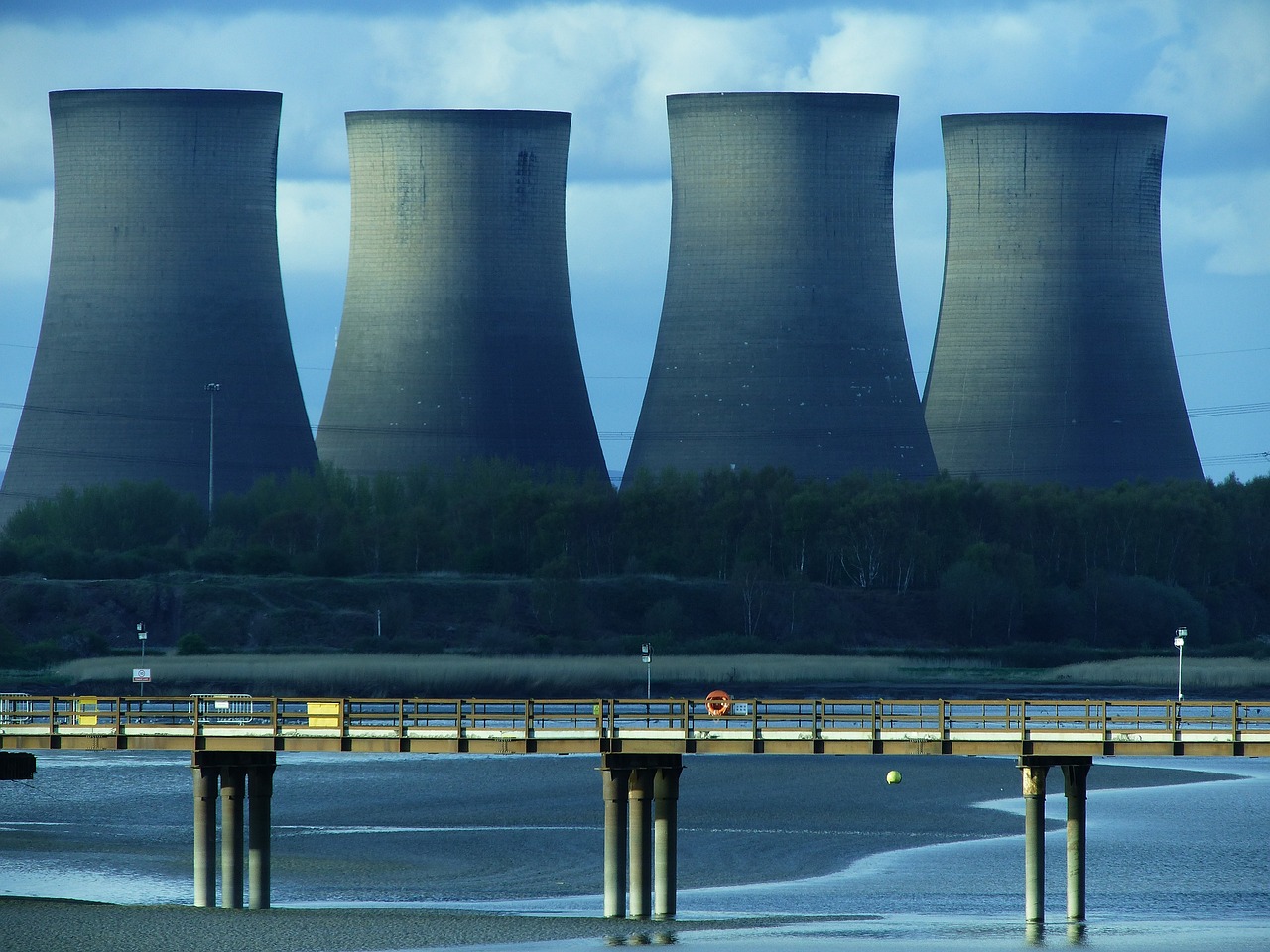Cooling towers are an integral part of many industrial processes, ensuring the efficient operation of machinery and the safe disposal of excess heat. These towering structures play a pivotal role in maintaining the temperature of industrial facilities, power plants, and commercial buildings. While their significance is undeniable, the technology and science behind cooling towers are often less understood. In this comprehensive article, we will explore the world of cooling towers, examining their functions, types, maintenance, environmental impact, and the latest innovations in this essential technology.
Understanding Cooling Towers
At its core, a cooling tower is a heat rejection device. Its primary function is to dissipate the excess heat generated during various industrial processes, including power generation, manufacturing, and air conditioning. By removing this excess heat, cooling towers help maintain the optimal operating temperature of equipment and systems.
How Cooling Towers Work
The operation of a cooling tower revolves around the principles of evaporative cooling. Here’s a simplified breakdown of the process:
Hot Water Inflow: In industrial processes, hot water carrying excess heat is directed into the cooling tower. This water typically enters the tower at the top.
Distribution System: Once inside the cooling tower, the hot water is distributed over a series of fill media. These fill media are designed to maximize the contact between the hot water and the surrounding air.
Airflow: Simultaneously, air is drawn into the cooling tower through fans, creating a flow of ambient air over the fill media. This air absorbs the heat from the water, causing a portion of the water to evaporate.
Heat Dissipation: As the water evaporates, it carries away the heat, cooling the remaining water in the process. The heat-laden air, now moisture-rich, is expelled into the atmosphere.
Cooled Water Outflow: The cooled water is collected at the bottom of the cooling tower and returned to the industrial process for further use. The process can be repeated continuously to maintain the desired operating temperature.
Types of Cooling Towers
Cooling towers come in various types, each with its own set of characteristics and applications. The common types include:
Natural Draft Cooling Towers: These large, chimney-like towers use the natural buoyancy of air to create airflow. They are typically used in power plants and other facilities with high heat dissipation needs.
Mechanical Draft Cooling Towers: Mechanical draft cooling towers employ fans or blowers to force air over the fill media. They are highly adjustable and find use in various industrial processes.
Open Cooling Towers: These cooling towers expose the cooling water directly to the atmosphere, allowing some evaporation and heat dissipation. They are often used in HVAC systems.
Closed Cooling Towers: Closed cooling towers enclose the cooling water, preventing direct contact with the outside air. They are suitable for environments where water conservation is a concern.
Crossflow and Counterflow Cooling Towers: These terms refer to the airflow direction relative to the water flow in the cooling tower. Crossflow towers are efficient and compact, while counterflow towers offer better heat transfer.
Hybrid Cooling Towers: Hybrid cooling towers combine elements of both open and closed cooling systems. They are designed to strike a balance between water conservation and efficiency.
The Role of Cooling Towers in Industry
Cooling towers are vital in a wide range of industries, contributing to the efficiency, safety, and environmental responsibility of industrial processes. Some of the key industries that rely on cooling towers include:
Power Generation
Power plants, whether they are nuclear, coal, natural gas, or renewable energy facilities, generate a significant amount of heat during the electricity generation process. Cooling towers are used to dissipate this heat and maintain safe operating temperatures for turbines and other equipment.
Manufacturing
In manufacturing industries, cooling towers are employed to cool machinery and control the temperature of chemical reactions. They are commonly used in the production of steel, petrochemicals, cement, and plastics.
HVAC Systems
Commercial and residential buildings utilize cooling towers in their HVAC (heating, ventilation, and air conditioning) systems to maintain comfortable indoor temperatures. These cooling towers are usually smaller in scale and help control the temperature of the circulated air.
Oil Refineries
Oil refineries require efficient cooling systems to manage the temperatures of various processes. Cooling towers are an integral part of these systems, ensuring the safety and effectiveness of refining operations.
Data Centers
Data centers, which house servers and electronic equipment, generate a substantial amount of heat. Cooling towers are used to remove this heat, preventing overheating and equipment damage.
Food and Beverage
In the food and beverage industry, cooling towers are employed for temperature control during food processing, as well as in refrigeration systems.
Environmental Impact and Considerations
While cooling towers play a crucial role in various industries, they are not without their environmental impact and considerations. Here are some important factors to keep in mind:
Water Usage
Cooling towers consume water through the evaporation process. High water usage can be a concern in regions with water scarcity or during drought conditions. To address this issue, closed cooling towers and hybrid cooling towers are designed to reduce water consumption.
Legionella Bacteria
Cooling towers can potentially harbor Legionella bacteria, which may lead to health concerns if not properly maintained and sanitized. Regular maintenance, cleaning, and water treatment are essential to mitigate the risk of bacterial growth.
Energy Consumption
The fans or blowers used in mechanical draft cooling towers consume energy. Efficiency measures, such as variable-speed fans and regular equipment maintenance, can help reduce energy consumption.
Noise and Aesthetics
Cooling towers can generate noise, which may be a concern in residential or urban areas. Some cooling towers are equipped with noise-reduction features. Additionally, the aesthetics of cooling towers may need to align with the surroundings in urban environments.
Maintenance and Best Practices
Proper maintenance is crucial for the efficient and safe operation of cooling towers. Key maintenance tasks include:
- Regular cleaning and disinfection to prevent bacterial growth.
- Inspection and cleaning of fill media to maintain optimal heat transfer.
- Monitoring and control of water quality to prevent scale and corrosion.
- Lubrication and maintenance of fans or blowers for energy efficiency.
- Inspection of structural components for safety and stability.
Innovations in Cooling Tower Technology
Advancements in cooling tower technology continue to enhance efficiency and environmental sustainability. Some notable innovations include:
Smart Controls: The integration of smart sensors and controls allows for real-time monitoring and adjustment of cooling tower operation, optimizing energy use and water consumption.
Water Recycling: Systems that recycle and reuse cooling tower water, reducing the overall water demand of industrial processes.
Dry Cooling Towers: These systems use air as the cooling medium instead of water, minimizing water usage but often requiring more energy.
Hybrid Systems: Combining the benefits of open and closed cooling towers, hybrid systems aim to strike a balance between efficiency and water conservation.
Advanced Materials: The use of new materials for fill media and construction can improve the heat transfer efficiency and durability of cooling towers.
Conclusion: Cooling Towers in a Changing World
Cooling towers are fundamental to the efficient and responsible operation of industries across the globe. They serve as the unsung heroes of thermal management, ensuring the safe and effective operation of power plants, manufacturing facilities, and HVAC systems. As industries evolve and the demand for sustainability and resource conservation grows, cooling towers will continue to adapt and play a pivotal role in shaping the future of industrial processes.
Understanding the principles, types, and considerations surrounding cooling towers is essential for ensuring their optimal performance and environmental responsibility. The ongoing development of innovative cooling tower technologies promises a brighter, more sustainable future for industries that rely on these essential heat-rejection devices.















